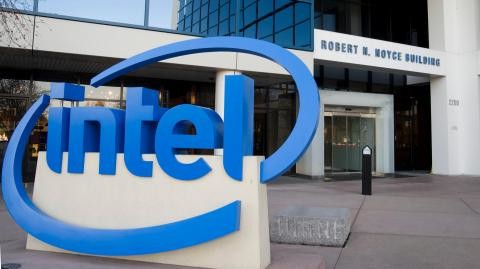[PConline News] With the release of the eighth-generation Core Duo, Intel has once again captured attention. However, it's important to note that this isn't the only innovation from Intel recently. The company has also unveiled its first self-learning neuromorphic chip called "Loihi." As the demand for processing large volumes of unstructured and dynamic data continues to grow, future computing needs will go far beyond traditional CPU and GPU architectures. The future is clearly heading toward the era of artificial intelligence.

Loihi is designed to mimic the way the human brain functions, learning from various environmental feedback patterns. Unlike traditional machine learning, which requires extensive training, Loihi can learn and reason using data directly. It uses an "asynchronous activation" method to perform computations, making machine learning more efficient while consuming significantly less power.
Like other neuromorphic chips, Loihi is based on the concept of "neuron stimulation" as its fundamental unit of computation. These "neurons" replace the traditional logic gates found in silicon processors. Instead of relying solely on binary 1s and 0s, information is processed through weighted signals, meaning each signal carries different levels of intensity—offering a more nuanced form of computation compared to conventional CPUs.

Loihi consists of 128 computational cores, with each core containing 1,024 artificial neurons. In total, the chip features over 130,000 neurons and 130 million synapses. Not all neurons are active at the same time. According to Narayan Srinivasa, a senior principal engineer and chief scientist at Intel’s lab, “without neural stimulation, the chip doesn’t consume energy.†This makes Loihi incredibly energy-efficient—up to 1,000 times more efficient than today’s standard processors—a major advantage for next-generation AI systems.
The key features of the Loihi test chip include:
- A fully asynchronous neuromorphic multi-core network structure that supports diverse sparse, hierarchical, and cyclic neural network topologies.
- Each core includes a learning engine capable of adjusting network parameters during operation, supporting various learning modes such as unsupervised, reinforcement, and monitoring.
- Manufactured using Intel’s 14nm process technology.
- Contains 130,000 neurons and 130 million synapses.
- Developed and tested for efficient algorithms including path planning, constraint satisfaction, sparse coding, dictionary learning, and dynamic pattern learning and adaptation.
- Offers up to 1,000 times greater efficiency than traditional computing systems used for training.
In the first half of 2018, Intel planned to share the Loihi test chips with leading universities and research institutions to accelerate AI development. While it may still be some time before Loihi leaves the lab, it’s clear that the future is moving toward AI-driven computing. This breakthrough marks an important step in the evolution of intelligent systems and could redefine how we interact with machines in the years to come.
This article is referred to from: https://newsroom.intel.com/editorials/intels-new-self-learning-chip-promises-accelerate-artificial-intelligence/
Steel tower,tower steel buildings,tower steel
JIANGSU HONGGUANG STEEL POLE CO., LTD. , https://www.hgsteelpoles.com